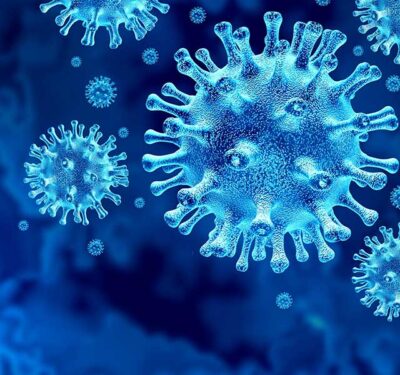As infants our bodies are composed about 75% of water. The percentage of water present decreases as we age. By middle age we are about 60% water and by old age we are composed of about 55% water. This water is found both within our cells (intracellular water), and outside of our cells (extracellular water). Extracellular water can further be divided into the water found in our blood stream (plasma) and the water found in the spaces between our cells (interstitial). More muscular individuals contain more total body water because muscle cells contain glycogen (sugar stored for energy use) and glycogen binds water. In contrast, fat cells contain very little water, so individual with more fat tissue will have less total body water.
Water is integral to our health and well-being. Humans can survive for up to 3 weeks without food, but without any water, death with ensue within days. The location of the water within our bodies can be an indication of health status. For example, swelling in the legs and feet can be an indication of blood clots, cardiac disease, lymphatic disease, kidney disease or even infection. In general, our water homeostasis (balance) is tightly controlled. Some of the many factors that affect the distribution of total body water include:
- Kidney Function
- Nutritional Status – (protein content in the blood)
- Cardiac Function
- Water loss (such as through sweating and breathing)
- Specialized Receptor Function (can detect over-hydration or dehydration)
- Hormone level
Recently, a significant amount of attention has been devoted to different types of water and the various health benefits.
There are several different types of commercially available water.
These include:
Tap Water: water from the faucets that has been treated, purified and disinfected. Can contain fluoride and chlorine
Bottled Water: can be either bottled tap water, or water that is from a spring that has been purified
Purified water: physically treated to remove impurities
Distilled water: water that is boiled and evaporated to remove dissolved minerals and then re-condensed without any minerals
Reverse Osmosis: usually acidic, water forced through membranes to remove large particles, pollutants and minerals
Alkaline water: water that has been separated and contains electric charges such as those found in magnesium and calcium ions
Deionized or demineralized water: minerals ions and impurities have been removed, but may still contain germs and bacteria
Soft water: water that only contains sodium
Hard water: any water with dissolved minerals
Alkaline water has been popping up on grocery shelves everywhere. Pure water has a pH of 7.0. Alkaline water has a pH of greater then 7.0, and acidic water has a pH less then 7.0.
What is pH and why is pH important?
pH is a measurement of the relative amount of free hydrogen ad hydroxyl ions in water. When water has more free hydroxyl ions it is basic and when it has more fee hydrogen ions it is acidic. The pH of water is important because it determines the amount of a substance that can be dissolved in water, the amount of dissolved substances that are biologically available, and the the toxicity of heavy metals found in the water. In general, heavy metals are more toxic at lower pH’s because of they are increasingly solubility (higher concentration of heavy metals can be dissolved in the water).
Our blood pH is tightly regulated between 7.35 and 7.45. When our blood pH gets too high (alkaline) or too low (acidic) it can be very dangerous and even fatal.
Just like our bodies tightly control our water homeostasis, our bodies have numerous intricate mechanisms to maintain our blood pH in the very narrow optimal range. When our blood pH is abnormal it is usually due to an underlying cause which needs to be further evaluated and treated appropriately. We cannot change our blood pH dramatically just by controlling our intake of acidic and basic foods/waters (unless your body’s control mechanisms are severely malfunctioning).
The theory behind the use of alkaline water is that it is ionized and can serve as an antioxidant to counteract the acidity of your blood. The theory is that this “acidity” can lead to conditions such as cancer, arthritis and other inflammatory issues. This has not been definitively borne out in the literature to date. At this time, it does not appear that alkaline water has enough support to promote it efficacy in cancer prevention. Drinking it occasionally should not have any significant effect on your health and well-being.
What is most important is to make sure that you are drinking adequate amounts of water. This recommendation varies some depending on your physical activity, kidney function, amount of water loss, medications, etc. The current general recommendation is about 2.7 liters per day for women and 3.7 liters per day per men. That being said, look at your urine, if you have no known kidney issues, and your urine is very dark that is an indication that you may need to increase your water intake. If your water intake is not adequate you are at risk for dehydration.
Some side effects of dehydration include:
- Decreased physical performance (can occur with just 2% dehydration)
- Reduced endurance
- Increased fatigue
- Decreased motivation
- Mood disruption
- Impaired cognitive function
- Decreased alertness, increased delirium
- Decreased short term memory
- Constipation
- Impaired kidney function
- Decreased blood pressure (can cause fainting, light-headness)
- Headache
- Poor skin complexion
The take home message at this time seems to be to drink filtered, purified water if possible with naturally occurring minerals but without contaminants (such as heavy metals, hormones, plastics, and antibiotics) and artificial sweeteners. In addition, it is important not to store water in plastic bottles which when heated (left out in the sun) can release BPA and other potentially toxic compounds into our water. Currently, it appears that spring water, mineral water or purchasing a filter for your tap water are the best choices.





